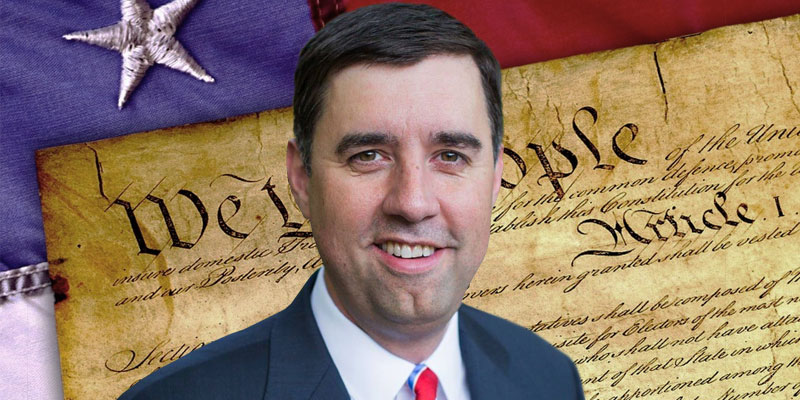The summer of 1787 was a pivotal moment in American history. Our young nation had defeated the British in a bloody revolution but was struggling through the early years of independence. The Founding Fathers gathered in Philadelphia to determine how to put the nation on better footing, with a government that would function capably while protecting our God-given rights. On September 17, after months of debate, the Constitution emerged. Its success was far from certain. But 233 years later, it proudly endures – and it has created the greatest environment for ordered liberty the world has ever known.
What makes our Constitution exceptional? Some point to the Bill of Rights. Of course, those first ten amendments guarantee our rights to freely exercise religion, to exercise the freedom of speech, to keep and bear arms, and to be free from unreasonable searches and seizures. But other constitutions around the globe have similar “guarantees.” Take for instance the constitution of North Korea, which supposedly protects its citizens’ rights to freedom of “speech, press, assembly, demonstration, and association,” and “the inviolability of the person.” We all know those promises are worthless, which explains why our Founders considered bills of rights, without more, to be mere “parchment guarantees.”
The Constitution stands apart because it created a structure that secures liberty. Our Founding Fathers were students of history, and they knew that the concentration of power was inherently dangerous. As James Madison observed, “the accumulation of all powers, legislative, executive, and judiciary, in the same hands … is the very definition of tyranny.” So instead of relying exclusively on promises made by the government, the Founders designed a constitutional framework that would provide what Madison called “a double security” for individual rights. They accomplished this by dividing power in two directions – horizontally within the federal government and vertically with the states. It certainly created a slower lawmaking process, but sacrificing speed for liberty was a trade-off the Founders were more than happy to make.
Many today criticize the sluggishness of our system of government without acknowledging the security it provides for individual rights. At the national level, if one branch of government had the power to make, execute, and interpret the law, there would be no protection for those whose rights were violated. Our Founding Fathers keenly understood this danger because they had led the revolution to overthrow the tyranny of the British crown. By separating power among three branches of the federal government – legislative, executive, and judicial – it would be harder to oppress citizens because each branch would check the others.
But the Founders didn’t stop there. To ensure liberty, they added another layer of protection: federalism. Instead of a centralized, top-down system, we would have a government of co-sovereigns with distinct spheres of power. The Constitution would constrain the federal government by limiting it to the exercise of specific, enumerated powers; the other appropriate functions of government would remain with the states. With that arrangement, power would be kept close to the people so that government could be held accountable if it dared to trample on our rights.
Let’s be grateful this Constitution Day for the wisdom of our Founders in dividing the powers of government. Our rights come from above – and the Constitution will continue to protect them, as long as we uphold the structural safeguards that allow our republic to flourish.
Jay Mitchell is an Associate Justice on the Supreme Court of Alabama.
Don’t miss out! Subscribe today to have Alabama’s leading headlines delivered to your inbox.
